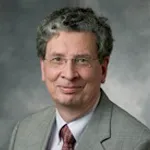
Photo by Norbert von der Groeben: Cornelia Weyand and her colleagues found that regulatory T cells become less
focused in their ability to fight inflammation as we age.
Stanford Medicine News Center - April 18th, 2016 - by Bruce Goldman
Stanford University School of Medicine researchers have unraveled the workings of an important type of immune cell whose existence was unknown just a few years ago.
The scientists found that this cell type keeps a lid on immune response, preventing runaway inflammation. But it becomes rare and malfunction-prone in even healthy people’s bodies as they get older. That could help to explain why our immune systems go increasingly haywire with advancing age.
The researchers identified the primary cause of these cells’ malfunction and linked it to an auto-inflammatory disorder, giant cell arteritis. They suspect this connection may hold for some far more common age-related conditions, too.
The findings, described in a study published April 18 in the Journal of Clinical Investigation, suggest possible new approaches to restoring function in these cells.
‘Built-in brakes’
Just as the immune system’s assault brigades must expand and become warlike when confronting a pathogen or incipient tumor, they must contract and become peaceful afterward, lest they harm healthy tissues, said the study’s senior author, Cornelia Weyand, MD, professor and chair of immunology and rheumatology. First authorship is shared by postdoctoral scholar Zhenke Wen, MD, PhD, and visiting scholar Yasuhiro Shimojima, MD, PhD.
“Fortunately, the immune system has built-in brakes,” said Weyand. “We call them regulatory T cells, or Tregs.”
When a pathogen invades the body or a cancerous cell emerges or a vaccine dose is administered, the immune system ramps up, producing antibodies and attacking suspected infected or tumorous cells, and secreting copious signaling substances that spur further attack-mode action.
If it weren’t for Tregs, this chain reaction might go unchecked, resulting in chronic inflammation, said Weyand. That’s what begins to happen in many people as they grow older. As we age, our immune response tends to grow both hyperactive and unfocused, like a car with lousy brakes, a distracted driver and a brick on the gas pedal. “The aging immune system becomes less focused — less capable of defending against cancers and infections or responding robustly to vaccinations — and much more inflammatory,” Weyand said.
CD4 T versus CD4 Treg
Tregs have long been known to exist. But until recently, the only ones known belonged to a category of immune cells called CD4 T cells. These cells have earned their nickname as “helper T cells” by participating in the immune response’s expansion, as opposed to contraction, phase. But CD4 Tregs suppress the activation and proliferation of helper T cells by secreting anti-inflammatory substances, for example, or by soaking up growth factors.
In work published in the Journal of Immunology in 2012, Weyand and her colleagues identified a set of Tregs hailing from a different category of T cells called CD8s. The CD8 Tregs — which, analogous to CD4 Tregs, account only a small fraction of all CD8 cells (also called “killer T cells” because they directly attack infected and cancerous cells) — differ in key respects from their CD4 counterparts, the helper T cells. For starters, the two cell types can be distinguished by the differential presence, on their surfaces, of proteins respectively designated CD8 and CD4.
In the new study, Weyand and her colleagues found many more differences. Unlike CD4 Tregs, which circulate freely throughout the bloodstream and tissues, CD8 Tregs preferentially take up residence in lymph nodes, the spleen and other regions, where huge reserve armies of potentially warlike helper T cells either stand at ease or are proliferating and preparing to enter circulation in search of cancerous or infected tissues. This proximity puts the CD8 Tregs in a position to stamp out helper T cell activation early on.
Putting the kibosh on helper T cell activity
Further experiments demonstrated that CD8 Tregs manufacture copious amounts of an enzyme called NOX2, which they package into tiny membrane-bound packets and transfer to the surfaces of abutting helper T cells. These NOX2-laden packets are taken up by the helper T cells. Inside their new home, the enzymes produce large volumes of highly reactive signaling substances that dial down helper T cells’ activation and proliferation.
There is no evidence to date that CD4 Tregs share this mechanism, whose effect is long-lasting. Contact between CD8 Tregs and helper T cells in early stages of activation shuts down the helper cells’ activity and reduces their proliferation by half or more, even several days after the CD8 Tregs have been removed.
Transferring NOX2 alone onto activated helper T cells also produces this effect.
Obtaining samples of healthy individuals’ blood from the Stanford Blood Center, the investigators observed that CD8 Tregs were only about half as common in blood from people ages 60 or older as in blood from 20- to 30-years-olds. Not only CD Tregs’ numbers but their ability to suppress helper T cell proliferation decline with advancing age, the researchers found. Laboratory experiments traced this to a drop in NOX2 production by older donors’ CD8 Tregs.
Next, the researchers focused on a cluster of disorders collectively called vasculitides, auto-inflammatory diseases in which T cells, in combination with other immune cells called macrophages, gang up and attack vascular tissue. Both Weyand and study co-author Jorg Goronzy, MD, professor of medicine, frequently see patients with vasculitis at Stanford Health Care’s Immunology and Rheumatology Clinic.
“It’s never good to have your vascular tissue attacked, and it’s especially dangerous when the vessels under attack are large arteries such as the aorta,” said Weyand. An injured artery can burst or become occluded. Either event can be life-threatening.
A potent form of vasculitis
One particularly potent and poorly understood form of vasculitis is giant-cell arteritis. In GCA, which affects large blood vessels, inflammation is so fierce it drives macrophages to fuse and form so-called giant cells.
Fortunately, CGA is also rare. “Its greatest incidence — about one in 10,000 new cases per year — is in Iceland,” said Weyand, a world-renowned expert on the disorder. “Curiously, no one below age 50 ever gets it, and until they do these patients appear completely healthy. Even after they come down with it, they’re no more susceptible to cancer or viral infections than healthy people.”
The new study showed why: GCA patients’ immune brakes, their CD8 Tregs, are shot, leaving helper T cell populations in their lymph nodes relatively unpoliced. Comparisons of their blood with that of age-matched healthy control subjects and patients with two other autoimmune diseases — psoriatic arthritis and small-vessel vasculitis — spotlighted a severe deficit among GCA patients in NOX2-producing CD8 Tregs. There was no such deficit among the patients with the two other disorders or in the healthy control subjects.
“This tells us that the deficit in NOX2-producing CD8 Tregs is specific to GCA, not just driving or driven by inflammation,” said Weyand. “That’s good news for our patients who have this disease, which has been an enigma. Now we know something about what’s causing it.”
The discovery, in this study, of NOX2 on the surface of CD8 Tregs — but not on other T cell types — makes them much easier to identify and count, Weyand said. She and her associates are taking advantage of the new-found biomarker to tally CD8 Tregs in patients with age-associated disorders now understood to be driven by chronic inflammation, such as coronary artery disease and Alzheimer’s and Parkinson’s diseases, to see if CD8 Treg deficits underlie some of these conditions’ disease pathology — and whether they may be amenable to potential NOX2-restoring treatments.
The team’s work is an example of Stanford Medicine’s focus on precision health, the goal of which is to anticipate and prevent disease in the healthy and precisely diagnose and treat disease in the ill.
Other Stanford co-authors of the study are postdoctoral scholars Tsuhoshi Shirai, MD, PhD, and Vinyin Li, PhD; research associates Jihang Ju, PhD, and Zhen Yang, PhD; and associate professor of biomedical data science Lu Tian, SciD.
The study was funded by the National Institutes of Health (grants AR042547, AI044142, AI108891, HL058000, HL117913 and AG045779), and the Govenar Discovery Fund.
Stanford’s Department of Medicine also supported the work.


